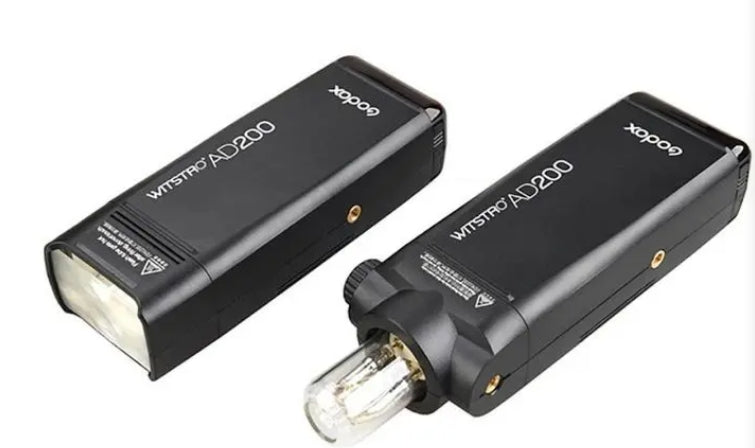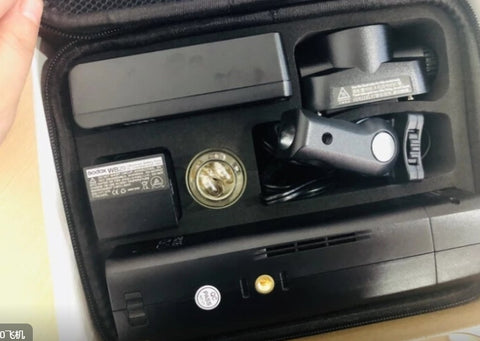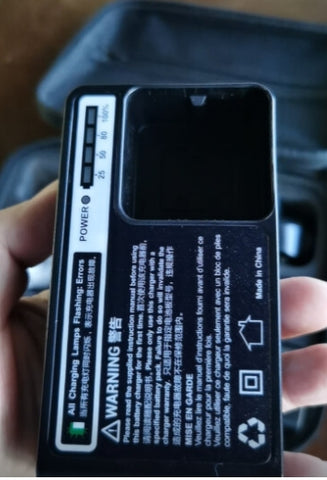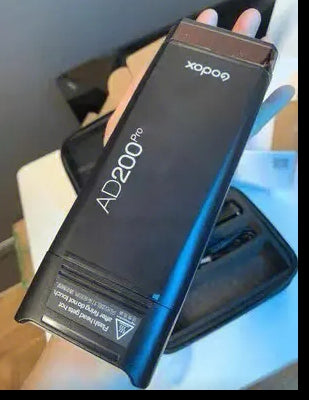Godox released the Godox AD200pro several years ago. Compared with its previous Goodox AD100, Godox AD100pro, and Godox AD200, the Godox pulled off some surprises with the Godox AD200pro. There is no significant update to this Godox model. But it is still worth checking out as a compact and portable camera flash.
Related Posts:
For this Godox AD200pro, its price in the US Amazon starts at $299. There is a 9 Stops in 1/10-Stop Increments that is better than the Godox AD200. That power control allows for fine-tuning the flash output to get the desired lighting balance and exposure for your photographs.
Godox AD200pro Design and Specs
There is no significant change to the Godox camera flash line series in practice. Like its previous models (such as Godox AD200 and Godox AD100pro), the Godox AD200pro is compact, portable, and pleasant to hold in your hand. The Goddox measures 6.8 x 3.0 x 2.1 and weighs 1.3 lb, a perfect on-the-go camera flash.
In terms of LCD screen, the Godox AD200pro has an excellent LCD screen that you may need to become more familiar with Godox's menu system. It's easy to figure all of this out. It's worth checking and using these settings to meet your desired results.
Giving the Godox AD200pro credit for its simple and intuitive screen is fair. The Godox AD200pro comes with a modelling light, which is good enough for photographers to preview and visualize how the light will fall on the subject before taking the shot.
Battery Life and Output Power
The battery life on its previous model, AD200, was excellent. It was exactly what we were expecting: perfect. The Godox AD200pro and the Godox AD200 share 2900 mAh, which can offer 500 Flashes (Full Power).
This ample battery capacity also ensures that most photographers, who typically don't use the maximum output for every shot, can enjoy a full day of shooting without recharging. In addition, the flash's self-contained nature, with the battery pack integrated into its design, adds to its convenience and portability.
Furthermore, you can add a round head and bulb light to the AD200 for even better light distribution. This flexibility allows you to shape the light in various ways, allowing for creative lighting techniques and different lighting effects.
Wireless Flash Control
Like many Godox AD series camera flashes, the Godox AD200 Pro does not have a typical hotshoe mount. Instead, it requires control through either a sync cable or the Godox 2.4GHz wireless system. I prefer using the X Pro transmitter, which can be mounted onto your camera's hot shoe.
It controls multiple groups of flash units, allowing you to manage them effortlessly. This transmitter eliminates the need for cables, simplifying the setup process.
The wireless X system is fantastic because it offers easy compatibility and flexibility. With a working range of over 100 meters (or 320 feet), you have plenty of room to experiment and create stunning lighting setups.
The system provides a powerful 200-watt light output, with a guide number of 52 meters when using the fresnel lens and up to 60 meters when using the bare bulb option.
Recycle Times and Flash Duration Options
There are a few notable differences when comparing the AD200Pro to the ad200. Firstly, the flash holder of the AD200 Pro is built with improved sturdiness and durability. Additionally, the refresh cycle times have been slightly improved, with the AD200 Pro having a faster recycle time of 1.8 seconds compared to the 2.1 seconds of the ad200 model.
An arguably more significant difference is the level of control over light output. While the AD200 offers eight control stops, ranging from 1/1 to 1/128, the AD200 Pro provides nine stops, allowing for more precise adjustments from 1/1 to 1/256. This increased granularity in control is especially beneficial when shooting in manual mode, as it enables fine-tuning of the light output.
Additionally, the AD200 Pro offers slightly expanded flash duration options. It allows you to go up to 1/15,380s of a second, whereas the older model had a maximum of 1/13,000s. This improvement in flash duration is significant for photographers who shoot subjects in fast motion or require precise freezing of action.
TTL Flash Metering
Regarding TTL compatibility, the AD200 was compatible with Canon, Nikon, and Sony systems. However, the AD200 Pro expands this compatibility by supporting Fujifilm, Pentax, and Panasonic systems. This increased compatibility provides photographers more versatility when utilizing TTL functionality across different camera brands.
Versatility and Easy to Use
For portraits, I have used the AD200 in various configurations. I added an umbrella to soften the light and create a more pleasing light pattern when using the fresnel lens. Despite my subject being strongly backlit, the AD200 provided enough light output to overpower the sun and capture well-exposed portraits easily. It proved to be very useful in such situations.
While the total light output is more significant with the bare bulb option, the fair distribution is more spread in a 360-degree pattern. It doesn't shape or focus the light in the same way as the Fresnel lens does. I had less light directed specifically on my subject when using the bare bulb.
However, when I increased the ambient light, the resulting images had a more natural and less "strobe" appearance. This lighting setup is particularly effective for illuminating a large group of people or creating a soft, diffused light without a specific direction.
The flexibility of the AD200 Pro allows for creative possibilities, even for achieving a natural result. I could hide the flash behind a boulder in a series of shots and use the light to my advantage.
I could opt for a more subtle look using the bare bulb configuration or switch to the fresnel lens to manipulate the ambient light and create unique shadows and illumination.
One of the advantages of these configurations is that I could maintain a fair distance from my subject while setting up the flash. I had control over the output by positioning myself at an angle that concealed the light source. Through the X-Pro transmitter, I could precisely adjust the light output to achieve the desired look. This setup provided me with numerous creative options for shaping the light.
It's worth noting that for some individuals, having the option of an on-camera flash or using the AD200in slave mode might be necessary. However, since the AD200 Pro cannot be attached directly to a hot shoe, it cannot serve as a master unit in such cases.
Yet, suppose you have a command unit or another flash unit. In that case, the AD200 Pro can still offer significant light output and flexibility, especially when utilizing the bare bulb option and similar features.
Conclusion
Godox camera flash gets better every year, and makes some minor changes to the camera flash. Compared to its previous model, the Godox AD200pro looks good, and there are minor updates to this camera flash, such as a recycle time of 0. 01 to 2. 1 sec and power control. Although fancy new and updated features are fun, the basics of battery life, recycle time, flash duration, power output, and portability are more important. If you focus on these fundamentals, your photography career will get better. And the Godox AD200pro is the best choice for you.







